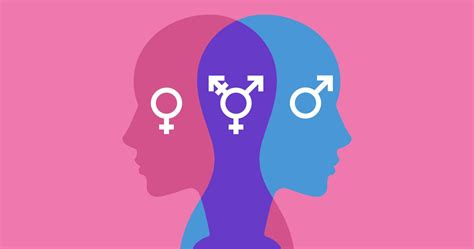Gender dysphoria is a medical condition in which an individual experiences discomfort or distress because of a mismatch between their gender identity and the sex they were assigned at birth. This condition can manifest in a range of ways, including feelings of discomfort with one's body, a desire to live as a different gender, and a general sense of not fitting in with one's assigned gender role. In this editorial, we will explore the causes, symptoms, and treatments of gender dysphoria, drawing on the latest research in the field.
One of the key challenges in understanding gender dysphoria is that it is not well understood what causes it. There is growing evidence to suggest that it may be related to a complex interplay of biological, psychological, and social factors. For example, some studies suggest that differences in brain structure and function may play a role in the development of gender dysphoria (1). Other research has found that childhood experiences of trauma or abuse may increase the risk of developing gender dysphoria later in life (2)
Regardless of its cause, gender dysphoria can have a significant impact on an individual's mental health and well-being. Many people with gender dysphoria experience symptoms of anxiety, depression, and social isolation (3). Some may also experience discrimination or stigma as a result of their condition, which can further exacerbate their distress.
Fortunately, there are a range of treatments available to help manage gender dysphoria. One of the most effective and widely used treatments is hormone therapy, which involves the use of hormones to alter the body's physical appearance and reduce feelings of dysphoria (4). Another common treatment is psychotherapy, which can help individuals better understand and come to terms with their gender identity (5)
Despite the availability of these treatments, many individuals with gender dysphoria still face significant barriers to care. These may include a lack of access to knowledgeable healthcare providers, limited insurance coverage for treatments, and societal stigma and discrimination (6). As such, it is crucial that policymakers and healthcare providers work to improve access to care for individuals with gender dysphoria, and to create a more inclusive and accepting society for all.
In conclusion, gender dysphoria is a complex medical condition that can have a profound impact on individuals' mental health and well-being. While there is still much to learn about the causes of this condition, there are a range of effective treatments available to help manage symptoms and improve quality of life. By working to improve access to care and reduce stigma and discrimination, we can create a more just and equitable society for all individuals, regardless of their gender identity.
References:
Guillamon, A., Junque, C., & Gómez-Gil, E. (2016). A Review of the Status of Brain Structure Research in Transsexualism. Archives of Sexual Behavior, 45(7), 1615–1648. https://doi.org/10.1007/s10508-016-0768-5
Turban, J. L., & Keuroghlian, A. S. (2018). Dynamic Gender Presentations: Understanding Transition and "De-Transition" Among Transgender Youth. Journal of the American Academy of Child & Adolescent Psychiatry, 57(6), 451–453. https://doi.org/10.1016/j.jaac.2018.03.019
Testa, R. J., Michaels, M. S., Bliss, W., Rogers, M. L., Balsam, K. F., & Joiner Jr, T. (2017). Suicidal ideation and behavior among transgender adults in relation to gender identity and rejection sensitivity. Suicide and Life-Threatening Behavior, 47(2), 202–213. https







